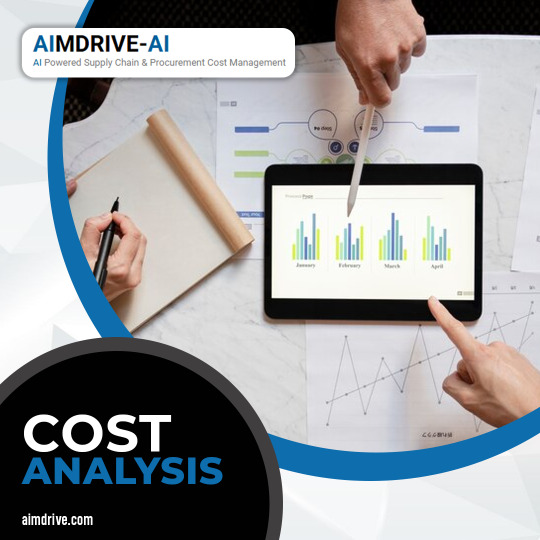#cost optimization
Explore tagged Tumblr posts
Text
Cloud bills rising faster than expected? This collection brings you the most effective cloud cost optimization strategies for 2025. Discover how leading businesses reduce cloud spend by up to 60% using smart tactics like right-sizing, automation, FinOps, reserved instances, and proper tagging. Includes practical tips, common mistakes to avoid, and a real-world success story from a UAE fintech company. Perfect for IT leaders, DevOps teams, and finance managers looking to control costs without compromising performance.
0 notes
Text
POM Machined Parts Cost Optimization: Material Utilization & Process Efficiency Improvement
In the competitive world of precision machining, optimizing the production costs of POM (Polyoxymethylene) components is crucial for maintaining profitability while delivering high-quality parts. This engineering thermoplastic, also known as acetal, offers excellent mechanical properties but requires smart manufacturing approaches to control expenses. Let’s explore proven strategies for POM…
#CNC machining#cost optimization#manufacturing optimization#material utilization#polymer machining#POM machining#process efficiency
0 notes
Text
Why ERP Is Africa’s Hidden Power Play for Long-Term Success

ERP isn’t just about software—it’s a strategic lifeline for African businesses. By managing HR, finance, sales, and compliance in one system, companies can eliminate manual errors, make informed decisions with real-time data, cut operational costs, and expand easily into new regions. With local compliance baked in, businesses can thrive and scale confidently using Odoo ERP for Africa.
0 notes
Text
#FinanceOutsourcing#FPO#skmc global#Business Efficiency#Accounting Services#Cost Optimization#Compliance#Strategic Growth
0 notes
Text
30% Cost Savings in Shipping? Here’s How D2FC Makes It Possible

Introduction
Shipping costs can drain your profit margins—especially if you’re running a fast-growing e-commerce brand with suppliers and customers across the globe. Delays, hidden fees, customs headaches, and expensive DDP (Delivered Duty Paid) charges often add unnecessary pressure. That’s where ECU Worldwide’s Direct to Fulfillment Centre (D2FC) program makes a real difference.
D2FC is more than a logistics solution—it’s a fully integrated fulfillment ecosystem. With smarter inventory handling, optimized shipping routes, and powerful digital tools like ECU360, it empowers businesses to simplify supply chains and save money. In fact, brands using D2FC have seen up to 30% savings in shipping costs.
Let’s explore how D2FC works, why it’s so effective, and which industries can benefit most.
Readmore
#affordable shipping#cost optimization#d2fc#Digital Freight#ecommerce shipping#freight efficiency#logistics technology#shipping cost savings#Shipping Strategies#smart logistics
0 notes
Text
Expenses Management Solution

An Expense Management Solution with mSELL streamlines corporate spending. It automates expense reporting, approvals, and reimbursements, reducing manual errors and fraud. mSELL, likely a mobile sales or business app, integrates seamlessly, allowing field teams to capture receipts, categorize expenses, and submit claims on-the-go. This ensures real-time visibility, faster processing, and better budget control for businesses, improving efficiency and compliance while empowering employees with easy-to-use mobile tools for their expenditures.
0 notes
Text
PGN Konsisten Jaga Operasional Stabil dan Cost Optimization
Pertahankan Peringkat “Sangat Sehat AAA”, Bukti PGN Konsisten Jaga Operasional Stabil dan Cost Optimization. Jakarta – PT Perusahaan Gas Negara Tbk (PGN) sebagai Subholding Gas Pertamina kembali mempertahankan peringkat nasional atas tingkat kesehatan perusahaan tahun buku 2024 yaitu AAA atau sangat sehat (excellent soundness). Peringkat ini menunjukkan kesehatan perusahaan dalam keadaan kokoh…
0 notes
Text
Cost Benefits of 3PL Services: Maximize Logistics Savings
Introduction In today’s competitive business landscape, companies are continually seeking ways to optimize operations and reduce costs. One effective strategy is partnering with Third-Party Logistics (3PL) providers. By outsourcing logistics functions, businesses can achieve significant cost savings, enhance efficiency, and focus on core competencies. Understanding 3PL Services Third-Party…
#3PL providers#3PL services#business logistics#cost optimization#freight management#logistics cost savings#logistics outsourcing#logistics solutions#logistics technology#scalable logistics#supply chain efficiency#supply chain management#third-party logistics#warehouse outsourcing
1 note
·
View note
Text
Supporting Robotics and Automation Rollouts with Industrial Estimating Services
Introduction Robotics and automation are revolutionizing industrial operations by boosting productivity, improving quality, and reducing labor costs. However, implementing these technologies requires significant investment and meticulous cost planning. Industrial estimating services play a pivotal role in supporting robotics and automation rollouts by providing detailed, accurate, and realistic cost estimates. These estimates help stakeholders make informed decisions and avoid budget overruns in complex automation projects.
Understanding the Cost Components of Robotics and Automation Robotics and automation projects involve a variety of cost elements beyond just the purchase price of equipment. Key components include:
Hardware costs: Robots, conveyors, sensors, controllers, and peripheral equipment.
Software costs: Licensing, integration platforms, programming, and updates.
Installation and integration: Engineering design, system integration, and commissioning.
Training and change management: Educating staff and adjusting operational processes.
Maintenance and support: Ongoing servicing, spare parts, and software upgrades.
Cybersecurity: Protecting automated systems from vulnerabilities.
Regulatory compliance: Ensuring adherence to safety and industry standards.
Accurately estimating these diverse costs is essential for comprehensive budgeting.
How Industrial Estimating Services Add Value Industrial estimating services bring specialized expertise in cost analysis tailored to the unique challenges of robotics and automation:
Detailed cost breakdowns: They separate costs into granular categories to ensure no aspect is overlooked.
Technology-specific expertise: Familiarity with current robotics technology pricing trends and vendor offerings.
Integration complexity assessment: Evaluating the technical challenges and associated costs of merging new automation with legacy systems.
Risk and contingency planning: Accounting for uncertainties such as installation delays, technology obsolescence, and vendor reliability.
Total cost of ownership: Considering long-term expenses beyond initial acquisition, including maintenance and software renewals.
Benchmarking: Using data from similar projects to validate estimates and identify potential cost savings.
Addressing Challenges Unique to Automation Projects Robotics and automation projects face unique cost estimation challenges, such as:
Rapid technology evolution: Hardware and software prices can fluctuate quickly due to innovation cycles.
Customization needs: Many automation solutions require custom programming or adaptations, increasing costs.
Interoperability: Ensuring compatibility between new robots and existing control systems can be complex.
Workforce impact: Budgeting for retraining or reassigning employees affected by automation.
Cybersecurity investments: Growing concerns over industrial network vulnerabilities require dedicated budgeting.
Industrial estimating services use scenario planning and risk analysis to manage these challenges proactively.
The Role of Estimating Software and Tools Modern estimating services leverage software tools to improve precision and efficiency in automation project cost estimation:
Parametric estimating: Using statistical models based on project parameters to predict costs.
Cost databases: Access to up-to-date vendor pricing and historical data specific to automation equipment.
3D modeling and digital twins: Simulating automation workflows to identify hidden costs and optimize layouts.
Collaborative platforms: Facilitating communication between engineers, vendors, and estimators to refine budgets.
These tools help generate transparent, data-driven estimates.
Case Study: Automation in a Manufacturing Plant A manufacturing company planned to automate a packaging line with robotic arms and vision systems. The industrial estimating service conducted a detailed cost assessment, covering equipment purchase, system integration, and workforce training. By identifying hidden costs such as specialized safety enclosures and software licenses, the estimate prevented budget shortfalls. The company successfully deployed the automation system on schedule and within budget, realizing productivity gains quickly.
Conclusion As robotics and automation continue to transform industry, the importance of precise cost estimating grows. Industrial estimating services enable successful rollouts by providing comprehensive, accurate, and realistic budgets that account for the complexities of automation projects. Their expertise helps organizations navigate uncertainties, optimize investment decisions, and maximize the value of automation initiatives.
For industrial operations looking to embrace robotics, partnering with a skilled estimating service is a critical step toward achieving cost-effective and efficient automation adoption.
#robotics cost#automation budgeting#industrial estimating#automation rollout#integration costs#technology pricing#software licensing#workforce training#cybersecurity budgeting#system commissioning#project risk#cost breakdown#parametric estimating#digital twins#industrial automation#maintenance costs#vendor pricing#scenario planning#cost optimization#legacy systems#change management#industrial robotics#manufacturing automation#total cost of ownership#estimating software#project budgeting#contingency planning#technology upgrades#estimating tools#automation projects
0 notes
Text
Course: Effective Financial Modelling in the Power Industry+201010232279
Want to enhance your financial decision-making in the power industry?
Struggling with financial data analysis and risk management?
Join the Effective Financial Modelling in the Power Industry course and gain essential skills!
االجودة الأوربية — European Quality
Build accurate financial models using Excel
Improve project performance with advanced data analysis
Assess risks and make smarter financial decisions
Don’t miss out — secure your spot now!
For inquiries & registration:
+2010 10232279
— — — — — — — — — — — — — — — — — — — —
#financialmodelling#powerindustry#energyfinance#FinanceTraining#RiskManagement#excelforfinance#projectfinance#InvestmentAnalysis#businessgrowth#financialplanning#oilandgas#petroleum #gasandoil#EnergySector#financeprofessionals
financial modelling, power industry, energy finance, financial analysis, risk management, Excel for finance, investment strategies, financial decision-making, project evaluation, corporate finance, energy sector, cost optimization, financial forecasting, capital investment, financial performance

#financialmodelling#powerindustry#energyfinance#FinanceTraining#RiskManagement#excelforfinance#projectfinance#InvestmentAnalysis#businessgrowth#financialplanning#oilandgas#petroleum#gasandoil#EnergySector#financeprofessionals#financial modelling#power industry#energy finance#financial analysis#risk management#Excel for finance#investment strategies#financial decision-making#project evaluation#corporate finance#energy sector#cost optimization#financial forecasting#capital investment#financial performance
0 notes
Text
How to Use Telemetry Pipelines to Maintain Application Performance.
Sanjay Kumar Mohindroo Sanjay Kumar Mohindroo. skm.stayingalive.in Optimize application performance with telemetry pipelines—enhance observability, reduce costs, and ensure security with efficient data processing. 🚀 Discover how telemetry pipelines optimize application performance by streamlining observability, enhancing security, and reducing costs. Learn key strategies and best…
#AI-powered Observability#Anonymization#Application Performance#Cloud Computing#Cost Optimization#Cybersecurity#Data Aggregation#Data Filtering#Data Normalization#Data Processing#Data Retention Policies#Debugging Techniques#DevOps#digital transformation#Edge Telemetry Processing#Encryption#GDPR#HIPAA#Incident Management#IT Governance#Latency Optimization#Logging#Machine Learning in Observability#Metrics#Monitoring#News#Observability#Real-Time Alerts#Regulatory Compliance#Sanjay Kumar Mohindroo
0 notes
Text

The Role of Robotics: How Automated Machines Are Shaping the Future of Oil & Gas
The oil and gas industry is undergoing a transformative shift, driven by advancements in robotics. These automated machines, once confined to futuristic visions, are now integral to the sector’s operations. From ensuring safety in hazardous environments to enhancing efficiency and sustainability, robotics is paving the way for a smarter, more resilient industry.
Robots are tackling some of the most challenging aspects of oil and gas operations, especially in environments where human intervention is limited or dangerous. Equipped with advanced sensors and AI-driven technologies, these machines can perform tasks like deepwater drilling, pipeline inspections, and facility maintenance with unparalleled precision. Their ability to operate in extreme conditions has turned them from a technological novelty into a necessity for companies striving for operational excellence.
Transformative Applications of Robotics
One of the most impactful applications of robotics in oil and gas is subsea operations. Remotely operated vehicles (ROVs) and autonomous underwater vehicles (AUVs) play a critical role in exploring, maintaining, and repairing underwater assets. These robots navigate extreme depths, conducting tasks like pipeline inspections and platform repairs while streaming real-time data to engineers. By eliminating the need for divers in high-risk environments, they significantly enhance safety and efficiency.
Drilling and well operations, traditionally labor-intensive and hazardous, are also benefiting from robotics. Robotic drill systems automate repetitive tasks, optimize drilling performance, and reduce human error. These systems leverage real-time data to adjust operations dynamically, leading to cost savings and improved productivity.
Another key area is pipeline inspection. Robotic crawlers equipped with cameras and ultrasonic sensors can traverse pipelines, identifying leaks, corrosion, or structural weaknesses. Unlike traditional inspection methods, which often require costly shutdowns, these robots perform their tasks without disrupting operations, making them invaluable for minimizing environmental risks and downtime.
Facility maintenance is another field where robotics is making strides. Drones and robotic arms are used for inspections, cleaning, and repairs in hard-to-reach areas. Drones with thermal imaging cameras can scan facilities for hotspots or structural issues, enabling swift interventions and reducing operational delays.
Unparalleled Benefits of Robotics
Robotics offers numerous benefits that are reshaping the industry. The most significant of these is enhanced safety. Robots operate in environments that are too dangerous for humans, such as high-pressure subsea zones or areas with toxic gases, dramatically reducing the risk of workplace accidents.
Cost efficiency is another major advantage. While the initial investment in robotic systems can be high, the long-term savings through reduced downtime, optimized resource use, and minimized errors are substantial. Additionally, robots’ precision in performing tasks leads to better operational outcomes and fewer costly mistakes.
Modern robots are also equipped with advanced sensors and communication systems, providing real-time data insights. This data is crucial for predictive maintenance, informed decision-making, and continuous process improvement.
Challenges to Overcome
Despite their benefits, robotics in oil and gas comes with challenges. The high initial cost of robotic systems can be a barrier, particularly for smaller companies. However, the long-term return on investment makes a compelling case for adoption.
Cybersecurity risks are another concern. As robots rely on interconnected systems and IoT technologies, they are vulnerable to cyberattacks. Companies must prioritize robust security measures to safeguard their operations. Additionally, the transition to automation raises concerns about workforce displacement. However, this shift also presents opportunities for workers to transition into roles focused on operating, maintaining, and innovating robotic systems. Reskilling and upskilling will be essential to navigate this change successfully.
The Future of Robotics in Oil & Gas
The future of robotics in oil and gas is incredibly promising, with trends like AI-driven automation leading the way. Robots equipped with artificial intelligence and machine learning are becoming smarter, capable of predicting maintenance needs, optimizing workflows, and adapting to changing conditions.
Collaborative robotics, or cobots, are also gaining traction. Designed to work alongside humans, these robots assist with complex tasks, fostering a more efficient and collaborative environment.
Sustainability is another focus area. Green robotics, designed to minimize environmental impact, will play a crucial role in monitoring emissions, detecting leaks, and supporting the industry’s transition toward greener practices.
Robotics is revolutionizing the oil and gas industry by introducing automation, enhancing safety, and optimizing efficiency. From subsea operations to facility maintenance, robots are transforming how companies operate, making the industry smarter and more resilient.
Despite challenges like cybersecurity risks and workforce transitions, the potential of robotics is too significant to ignore. By addressing these challenges with a strategic approach, companies can unlock unparalleled benefits and set new standards for operational excellence.
The future of oil and gas lies in embracing innovation, and robotics is at the forefront of this transformation. To explore more, join the Oil & Gas Automation and Digitalization Conference (https://ogad-conference.com/) to reach new heights in operational excellence and technological innovation.
#Robotics in Oil & Gas#AI-driven Robotics#ROVs and AUVs#drilling Automation#Cost Optimization#Green Robotics
0 notes
Text
Small Batch FR4 Fabrication: Best Practices & Cost Optimization
Small batch FR4 fabrication presents unique challenges for engineers and product developers. While FR4 remains the most popular substrate for PCB manufacturing, optimizing the process for prototype or low-volume production requires special consideration. This guide covers best practices to maintain quality while controlling costs in small batch FR4 projects. Understanding FR4 Material…
#circuit board production#cost optimization#FR4 fabrication#PCB prototyping#small batch manufacturing
0 notes
Text
AIMDRIVE: AI-Powered Cost Analysis for Supply Chain Excellence

AIMDRIVE leverages cutting-edge AI technology to deliver precise cost analysis solutions for supply chain and procurement management. Our advanced tools identify inefficiencies, optimize sourcing strategies, and uncover hidden cost-saving opportunities. Partner with AIMDRIVE to transform your supply chain operations and achieve unparalleled cost efficiency.
0 notes
Text

Rod pricing impacts the overall quality of TMT steel used in construction projects. Higher quality rods typically come at a higher cost, affecting structural integrity and safety. Understanding pricing trends and factors can help construction managers make cost-effective decisions while ensuring the best quality materials are used.
#TMT steel#rod pricing#steel quality#construction materials#steel procurement#material costs#quality assurance#structural integrity#building safety#steel supply#construction planning#pricing analysis#steel strength#construction rods#cost factors#material quality#construction projects#steel sourcing#rod production#building materials#cost optimization
0 notes
Text
Unlocking Cost Efficiency with Sphere Global Solutions’ BPO Services
In today’s fast-paced business environment, organizations across industries are constantly seeking ways to optimize their operations while maintaining top-notch service delivery. Sphere Global Solutions has been at the forefront of this transformation, offering bespoke Business Process Outsourcing (BPO) solutions that enable businesses to achieve remarkable cost efficiency. One of our standout journeys has been helping clients reduce overhead costs annually by nearly 60% while enhancing operational effectiveness.
The Cost-Saving Opportunity
Businesses are often burdened by high operational costs, ranging from employee salaries and benefits to infrastructure maintenance and technology investments. These overheads, while necessary, can significantly strain budgets and hinder growth potential. Enter Sphere Global’s BPO solutions—tailored to help organizations outsource non-core processes efficiently and cost-effectively.
Our BPO services are designed to:
Streamline Processes: By automating repetitive tasks and standardizing workflows, businesses can reduce errors and improve productivity.
Leverage Expertise: Our skilled professionals bring domain-specific expertise, ensuring quality outcomes without the need for extensive in-house training.
Enable Scalability: Whether it’s scaling up for seasonal demands or adapting to new market opportunities, our flexible solutions accommodate evolving business needs.
The Journey to Extensive Cost Reduction
One of our flagship success stories involves partnering with a Tier 3 telecom operator that had recently acquired another Tier 3 operator. The merger posed significant challenges in terms of integrating operations, managing costs, and maintaining service quality. Here’s how Sphere Global Solutions stepped in to drive efficiencies:
Comprehensive Audit: We conducted an in-depth analysis of the combined entities to identify inefficiencies in processes, vendor management, and resource utilization, including people and energy consumption.
Strategic Consultancy: Sphere provided expert consultancy services focused on streamlining processes, consolidating vendor contracts, optimizing the data center (DC) footprint, and reducing resource consumption. This included both human resources and electrical power requirements, ensuring sustainable operations.
Custom BPO Solution: To further enhance efficiency, we implemented tailored BPO services that automated routine administrative tasks and optimized workflows across the integrated organization.
Seamless Integration: Transitioning to a unified operational framework was critical. Our team ensured smooth integration of systems, processes, and teams with minimal disruption to ongoing activities.
Continuous Optimization: Post-integration, we continued to refine the processes through regular performance evaluations and by leveraging client feedback, ensuring sustained efficiencies.
The result? The telecom operator not only achieved nearly 60% in annual cost reductions in some areas but also improved its operational agility and environmental sustainability. By consolidating its data centre footprint and optimizing network build as well as resource utilization, the company positioned itself as a leaner, more competitive player in the market.
Why Choose Sphere Global Solutions?
At Sphere Global Solutions, we pride ourselves on delivering solutions that go beyond cost-cutting. Our BPO services are about creating sustainable value, enhancing customer experiences, and enabling businesses to focus on their strategic goals. Key differentiators include:
Proven Expertise: With years of experience across diverse industries, we understand the unique challenges businesses face.
Cutting-Edge Technology: Leveraging the latest tools and platforms ensures efficiency and accuracy in every process we handle.
Client-Centric Approach: Every solution is customized to meet the specific needs of our clients, ensuring alignment with their objectives.
Join the Revolution
The journey to cost efficiency is no longer a luxury but a necessity in today’s competitive landscape. With Sphere Global Solutions as your partner, you can unlock unparalleled savings, enhance operational performance, and drive business growth.
Ready to transform your operations? Connect with us today and take the first step towards a leaner, more efficient future.
Contact Sphere Global Solutions to learn how we can help you achieve your cost-saving goals and drive lasting success.
0 notes